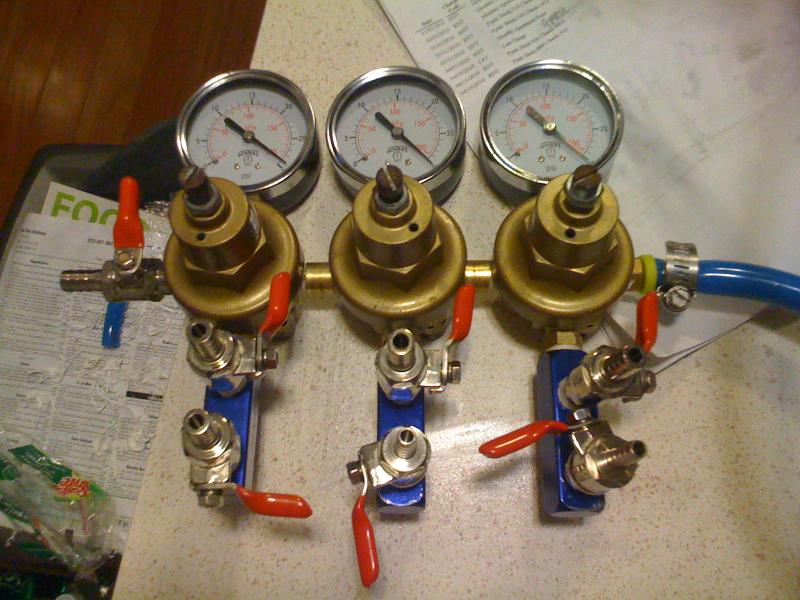ajwillys
Well-Known Member
I do too...isn't there a check valve in the coupler itself?? I thought so...
Yeah, the check valve is in the coupler, not the keg. Its that rubber thing in the CO2 in port on the side of the coupler.

I do too...isn't there a check valve in the coupler itself?? I thought so...
Yeah, the check valve is in the coupler, not the keg. Its that rubber thing in the CO2 in port on the side of the coupler.

5 5/16" check shutoff valves (Austin Homebrew) (one installed instead of a plug on the 'high' side of the last reg, so I always have a 38PSI hose for sealing kegs)

Interesting, I thought each output of a secondary was controlled by the regulator. Does the "high' side comment mean that that particular output is just a "pass-through," not regulated by the regulator?
Prob a typo, think you meant gage?Exactly. The ins/outs on the sides (in the pic) are "high" meaning the high pressure in/out. It's so you can chain them together. The top and bottom outputs are 'low' or 'sec' and are individually controlled by each reg. One is for a valve and one is for the actual output.
Prob a typo, think you meant gage?Exactly. The ins/outs on the sides (in the pic) are "high" meaning the high pressure in/out. It's so you can chain them together. The top and bottom outputs are 'low' or 'sec' and are individually controlled by each reg. One is for a valve and one is for the actual output.
No I meant gage, both are correct. I didn't know it either until years ago I became a tech writer, writing procedures for pneumatic/hydraulic testing. We wrote the word 'gage' a LOT.or even gauge?
No I meant gage, both are correct. I didn't know it either until years ago I became a tech writer, writing procedures for pneumatic/hydraulic testing. We wrote the word 'gage' a LOT.
Does anyone know if HF still sells those or if you can find an equivalent?

I used those quick connects, but found out the hard way they can develop slow leaks.
I used those quick connects, but found out the hard way they can develop slow leaks.
If you hit a full keg with CO2 to seal the lid, then set it aside to age, then hook it up to a low pressure (12psi) tap, the beer WILL end up in the gas lines.
B
I'm using one air-compressor QD from home depot. It's been inline for over a year and no leaks.
Are you guys checking everything with soapy water (NOT starsan) before you walk away? I usually crank the pressure wide open so even the smallest leak shows up. Even right out of the package I check everything.
B
drocu said:Great thread since I've been wondering the same thing but is this wortwhile? The cheapest I can find a ball valve with a check valve is $10-$11 from CHI Company. So the cost savings is very little if you DIY. As much as I like to make things myself, I may just purchase a manifold from one of the vendors here.
Enter your email address to join: